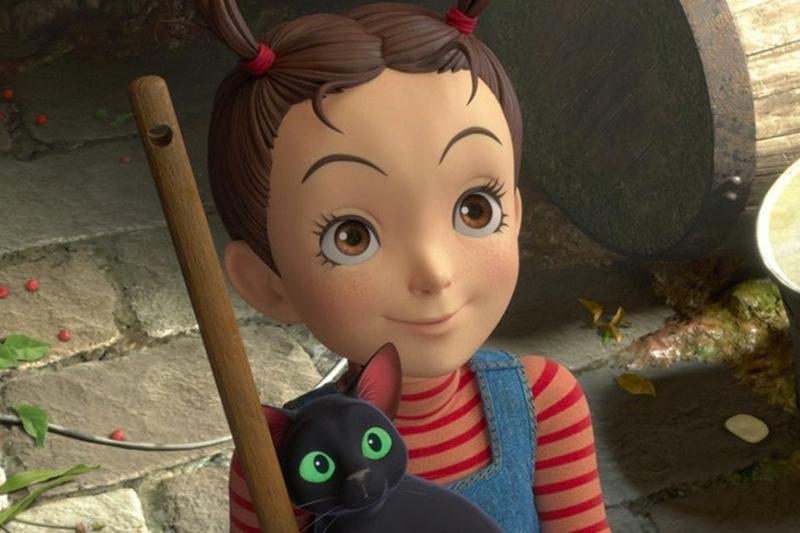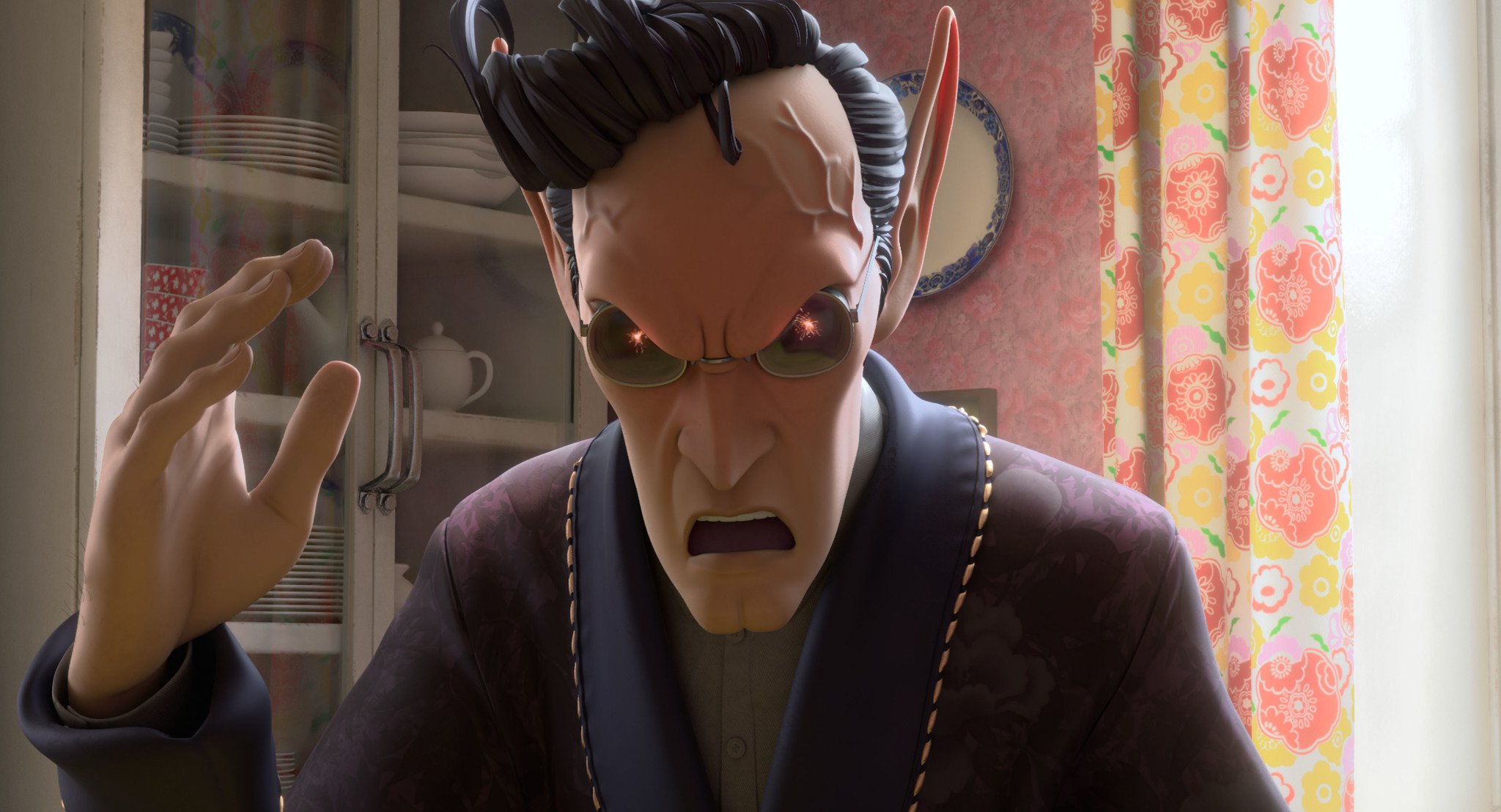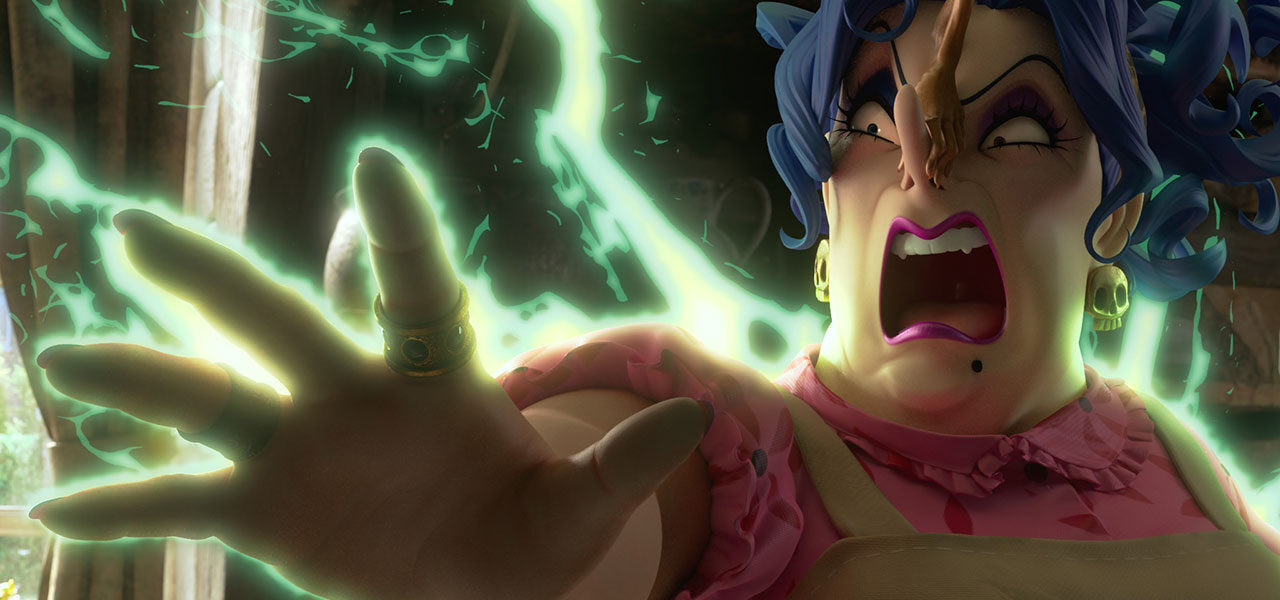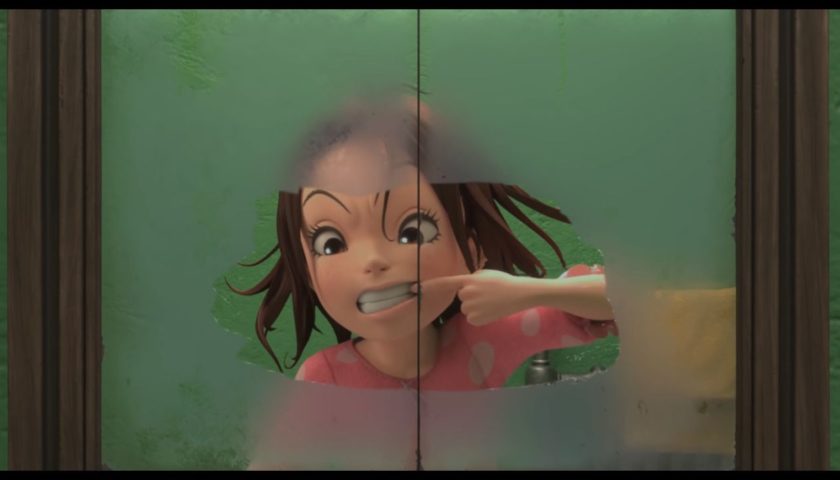You probably have some questions about Studio Ghibli’s newest feature, Earwig and the Witch. First might be “Is this some kind of bizarro children’s version of the rock musical Hedwig and the Angry Inch?” The answer is no, it’s not. That would be weird. Don’t read too much into those guitars on the poster, and Earwig singing in a manner that recalls Hedwig. The second question might be “Does the beloved Japanese animated studio releasing its first digitally animated film mean that all the world’s magic is well and truly dead?” The answer is, maybe.
Truth be told, Studio Ghibli is pretty good at 3D animation, especially for a first try. This shouldn’t be a surprise as Studio Ghibli would be pretty good at anything it puts its mind and resources to. But we don’t need them to be good at assembling 1’s and 0’s to make a computer-age facsimile of the lovingly hand-drawn animation they’ve been making for four decades. Since every other studio is already doing this, we need them to be good at labouring for endless hours over a craft that is financially impractical and has a low return on investment – unless, of course, that return is bringing exquisite joy to classic animation fans the world over.
But Earwig and the Witch, an adaptation of Diana Wynne Jones’ 2011 book, is not undone by its form, at least not entirely. It’s betwixt and between, not quite the expressionistic squiggles of classic Ghibli but not quite Pixar either. Characters’ eyes still turn into upside down U’s when they’re delighted, they still laugh in a way that looks like it threatens to crack their faces open – you know, those same expressions of joy the animators surely felt themselves when they drew them. Only now there’s a third dimension that renders everything just a bit uncanny, sort of like when Homer Simpson first stepped into the infinite parabolas and vectors of 3D land.
No, the real problem with Goro Miyazaki’s film – that’s Hayao’s son, though he’s no spring chicken at age 54 – is that it plays like a 15-minute short stretched out to 82 minutes. It has a lot of familiar elements from the Ghibli canon, specifically, his father’s masterwork Kiki’s Delivery Service, which also featured a budding witch learning her powers, and a black cat that talks.
But literally the whole movie is the titular girl, raised in an orphanage after being dropped there by her witch mother, slaving away for another witch and an even more powerful creature known as the Mandrake, after they adopt her to procure “an extra set of hands.” (That has a literal meaning at one point, hence the inverted commas.) Earwig befriends that cat and they try to ward off the magic practised on them by their two taskmasters, one who favours conjuring up plagues of worms, the other who can see and walk through walls and gets sparklers in his eyes when he’s angry.
That’s not to suggest that this stuff isn’t enjoyable in the moment. It’s just that the collection of moments amounts to nothing. If we’re taking Kiki’s Delivery Service as our primary source of comparison, that film possessed rich themes of a young girl coming into her powers as she navigates adolescence. Her story is rendered with a disarming emotional maturity, and her climactic quest to save her best friend from a dirigible on the loose is immensely satisfying.
Earwig has a male best friend here too, her orphanage buddy Custard, so named for his bright blonde hair. Rather too often she mistakenly calls the cat Custard, though his name is actually Thomas. The big difference is that Custard is gone from the story after ten minutes, as a sort perfect distillation of this movie’s abortive tendencies. An hour in, you are desperate for a dirigible to come along and save the day.
Its painful to deliver such a harsh verdict against a studio that’s been in the business of conjuring dreams and fantasies for more than 40 years, and has consistently done that at a very high level. And in truth, Earwig and the Witch is almost good. It’s got the trusty precocious Ghibli heroine, and design details that are equal parts wondrous and eccentric, the signature Ghibli elements that have always felt like they were extracted directly from our dreams.
But you’ve got to tell it like it is. There just isn’t much here. If Ghibli’s plan were to branch out into this new technology – though supposedly, the younger Miyazaki is the only one at the studio versed in it – wouldn’t it be symbolic to give us a story that feels like the equivalent of smashing a bottle of champagne against a ship’s hull? If you’re going to strike out on a new voyage, do it right. This movie just strikes out. To add a final dollop of peculiarity to the experience, the story ends so abruptly that you’ll sit up in your chair and wonder what happened.
If you’re looking for more metaphors, please let that not be the abrupt end to hand-drawn animation at Ghibli. We can rest safe in the knowledge that there’s at least one more coming, as the elder Miyazaki is hard at work on a fully hand-drawn feature called How Do You Live?, slated for a very distant-seeming 2023 release date that’s clouded in uncertainty. But when he and his remaining contemporaries hand down their bubbling cauldrons and other magic tricks to the next generation, what part of that magic will remain? That’s a question we all may hesitate to answer.
Earwig and the Witch is currently playing in cinemas.



